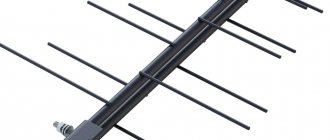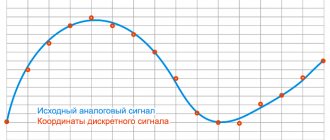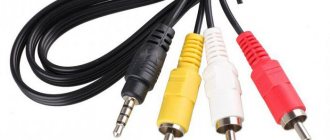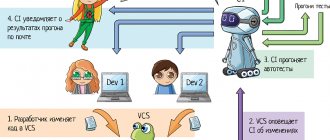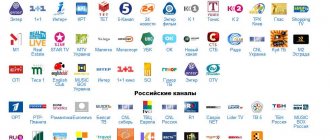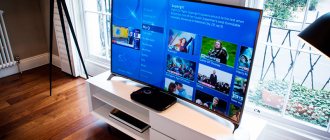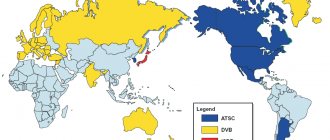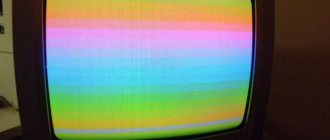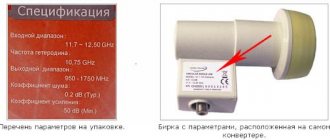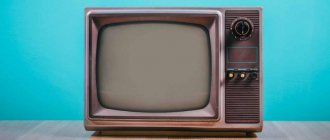What is the difference between Russian and Slovak assemblies?
Home page
All about TVs
Editor
In technical terms, none. Don’t listen to sellers who assure you that the Russian assembly includes a super-duper power supply, voltage stabilizer, etc., so to speak, adapted for our networks; There is also no improved tuner for receiving channels - this is a scam.
Internet myths:
1. Russian Samsungs are assembled with a sledgehammer, while Slovak ones are assembled by highly skilled workers;
2. Korean matrices are installed on Slovak Samsungs, Chinese matrices are installed on Russian ones.
Guarantee.
Russian Samsung phones come with an official warranty (12+12 months) from the manufacturer (Samsung). You should be given a universal warranty card BWC1101. If something happens, your TV will be repaired at an authorized service center. The repair period should not exceed 14 days, otherwise you have the right (for the first 12 months of warranty) to receive a new TV, or to terminate the sales contract and demand your money back. During the warranty period, repair work and components are paid for by the manufacturer, everything is free for you. After the warranty expires (24 months), you pay for all repairs and components.
Slovak Samsungs come with a seller’s warranty; it can be for 12 months, 24 months or 36 months. Most likely, you will be given a universal warranty card BWC1005 (not the one that comes with the TV), or in general a standard warranty for everything in the world in A4 format. In this case, demand from the seller (IP) that an individual entrepreneur stamp be placed on the guarantee (which will indicate the full name and tax identification number), do not agree to any stamps from an online store that do not carry any information. Also, do not forget to take a cash receipt.
If a warranty case occurs, your TV will be repaired in a certain service center (with which the individual entrepreneur has an agreement; when purchasing, check with the seller), as a rule, these are the same authorized service centers where Russian Samsungs are repaired. All repair costs will be borne by the seller. If the service center refuses to repair for any reason, you have the right to take the TV to the seller and he will be obliged to carry out repairs within 14 days, otherwise you have the right to receive a new TV, or terminate the sales contract and demand a return You get the money (but it won’t be that easy to do). After the warranty expires, you pay for all repairs and components.
Since September 2012, Slovak Samsung phones have been supplied without a Russian menu and with a blocked smart TV. A solution to this problem has already been found (read the related topics). Since mid-November 2012, Slovak Samsungs can also have a Russian menu (it is flashed in Poland, or by sellers before sale).
Price.
Russian Samsungs are more expensive. The price, depending on the model and diagonal, can be significant and reach a difference of 15-90%. Only Russian-assembled Samsungs are sold in retail chains.
Tuner and destination country
The fourth value applies to the type and type of tuner. For example, the number 7 means a DVB-T2 tuner, and 0 deciphers the presence of a DVB-T tuner. This was used until 2013, and then numbers were replaced by letters, the latter meaning implied by the design of the device. The new decryption has the following meaning:
- AW (W) - DVB-T/C tuner;
- AB (B,AU or U) - DVB-T2/C/S2 tuner;
- AK (K) - DVB-T2/C tuner;
- AT (T) - two tuners 2 x DVB-T2/C/S2;
- SB - DVB-T2/C/S2 tuner;
- SS - DVB-T/C/S2 tuner;
- ST - two tuners 2 x DVB-T2/C/S2;
- SL - two tuners 2 x DVB-T/C/S2;
- AF (BF) - DTV Tuner/Digital Cable Tuner/Analog Tuner;
- DK - DVB-T2/C;
- AR (DR) - DTV Tuner/Analog Tuner.
Further, one or two letters may additionally appear in the tuner value. According to the manufacturer, these values are used for developers and do not carry specific information. At the end of the LG TV model, 3 symbols are used to decipher the region of application.
Production of electronics and household appliances
In 1969, Samsung, together with Sanyo, founded a semiconductor manufacturing company. Later, these institutions were merged. This is how Samsung Electronics came into existence, which in a short period became a leader in the field of technology production.
Since 1972, black and white televisions began to be produced. Later, refrigerators and washing machines, as well as color televisions, began to be produced. In 1980, Samsung computers began to be produced. The manufacturer focuses on consumer demand, so it has launched the production of laptops, smartphones, and tablets. Since the 1990s, telephone manufacturing has become popular, which is still in demand today.
The company began producing digital cameras because they were more in demand than film cameras. To date, 124 offices have been opened in 56 countries. The company operates on the basis of information technology, telecommunications, and digital media technologies.
About company
Samsung Electronics is a world leader in the sale of electronics, household appliances, and mobile phones. The company also produces semiconductors, telecommunication systems, and memory chips. The company is considered a subsidiary of Samsung Group. It employs more than 300 thousand people.
You can find many products produced by Samsung. The manufacturer is known for producing household appliances, electronics, televisions, vacuum cleaners, and washing machines. The range also includes smartphones, digital cameras and headphones.
What to look for when choosing a TV?
Diagonal . Compact models 22-32' are ideal for the kitchen. Panels 40-50' fit perfectly into the interior of a medium-sized apartment. 55 inches is now the universal standard for a large home TV. The largest devices from 65 inches and more are not cheap, the room size needs to be appropriate, but a home theater based on them is just a fairy tale!
Display resolution . HD-Ready (720p) in a sense is not even yesterday, the day before yesterday. However, for compact TVs it will do just fine. Full HD – the “smoking room” is still alive! How could it be otherwise, if the majority of TV channels are in SD and HD, and film content is still mostly distributed in 1080p format. UHD 4K delivers superb clarity. Broadcasts have appeared on some satellite and cable providers. I'm glad that buying media or downloading premium content in 4K is no longer a problem. Unless the files weigh a lot. 8K TVs and monitors are for the elite due to their very high prices. You can’t find video in its pure form yet, but the format is the future. And it's not far off.
HDR support . Having abandoned 3D, TV manufacturers, including Samsung, have switched to technology that allows them to broadcast content shot in a wider than standard dynamic range with maximum detail. Especially noticeable in dark and light areas of the picture. What was previously impossible to see in the shadows or against a bright background now becomes visible. Some analogy: a person with impaired vision always saw the world blurry, put on glasses for the first time and - Wow!
QLED technology . The principle of operation in simple words: between the classic LCD or otherwise LCD matrix and the LED backlight unit, an intermediate filter film is installed, consisting of a huge number of quantum dots (nanocrystals). Each particle transmits light through itself, turning it from white to colored. As a result, the widest palette with more than a billion shades is displayed on the screen. QLED panels are as close as possible to OLED displays in terms of black depth and contrast, while being superior in peak brightness and not subject to burnout.
Display and diagonal
After the brand name in symbol marking, the screen manufacturing technology comes first. For the period of 2021, 2 types of display are most often found:
- U - LED with backlighting liquid crystal LEDs;
- Q - QLED TV using quantum dots.
Currently discontinued display types:
- K - OLED with a matrix of organic light-emitting diodes;
- P - plasma;
- L—matrix illumination with fluorescent lamps;
- C - kinescope.
The second character in the marking value is used for the region of display production:
- E - Europe;
- A - Asia, Africa, Australia;
- N - Korea, North and South America;
- S - Iran.
The next 2 digits after the display type indicate its diagonal. Samsung's most popular models are considered to be television receivers with a diagonal of 32 to 65 inches.

